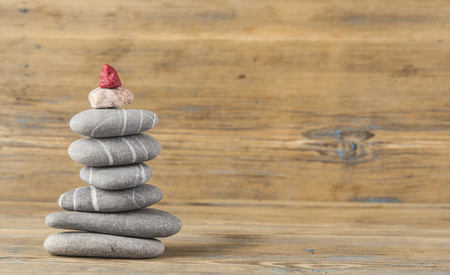The Spirit of Yin and Yang in Everyday British Life
Step into a typical UK household, and you may not immediately notice the quiet dance of energies that echo an ancient wisdom from faraway lands. Yet, beneath the hum of the kettle and the gentle flicker of the evening lamp, there is a subtle interplay at work—a delicate balance reminiscent of the age-old Chinese philosophy of Yin and Yang. In Britain’s blend of history and modernity, where Victorian terraces meet sleek urban flats, this concept finds fresh expression. The spirit of Yin and Yang calls us to recognise the harmony between light and dark, activity and rest, tradition and innovation within our living spaces. As we navigate daily routines—morning tea rituals, Sunday roasts, or moments curled up with a good book—these opposites are not in conflict but rather, they complement one another, weaving a tapestry that grounds us in both comfort and vitality. This visionary approach invites UK households to reimagine how ancient principles can enrich contemporary life, cultivating homes that are not only functional but deeply nurturing to the soul.
Energy Flow: Understanding Balance in British Homes
Stepping through the front door of a British home, whether it’s a timeworn Victorian terrace or a gleaming new build on a quiet cul-de-sac, one can sense the subtle interplay of energies at work. The yin and yang of each living space—the gentle calm of shaded corners and the vibrant pulse of sunlit lounges—whisper their stories into the everyday rituals of British life. These unseen currents shape more than just atmosphere; they set the tone for morning routines, afternoon teas, and restful evenings by the hearth.
In many UK households, energy flow is influenced by architectural history and local tradition. Older homes often feature narrow hallways and small windows, inviting introspection and a sense of retreat—a classic yin environment. In contrast, modern builds favour open-plan designs that flood rooms with light, encouraging social connection and outward expression—a clear yang quality. Balancing these energies is both an art and a necessity for harmony.
The Dance Between Old and New
British homes rarely exist as pure yin or pure yang; instead, they dance between polarities. The transition from an intimate reading nook to a communal kitchen mirrors the shifting needs of daily life. Below is a simple table illustrating how key features contribute to the energy balance in different types of British homes:
| Home Type | Yin Features | Yang Features |
|---|---|---|
| Victorian Terrace | Cosy alcoves Narrow passages Muted colours |
Bay windows High ceilings Fireplaces |
| Modern New Build | Soft furnishings Private bedrooms Minimalist décor |
Open-plan living Large windows Integrated lighting |
| Countryside Cottage | Thick stone walls Low beams Tucked-away corners |
Cottage gardens Sunny kitchens Pitched roofs with skylights |
The Mood of Spaces: Harmony in Daily Rituals
This balance—or imbalance—of energies manifests in daily life. A well-placed armchair beneath a sash window may become the sanctuary for quiet reflection (yin), while the breakfast bar basking in morning sunlight invites lively conversation (yang). Recognising these subtle influences allows families to adapt their spaces: perhaps adding soft textiles to temper harsh edges or introducing greenery where energy feels stagnant.
Sensing the Invisible: A British Sensibility
The British have long had an intuitive relationship with their homes, attuned to seasonal shifts and storied histories. Whether it’s rearranging furniture before winter or choosing paint shades inspired by misty mornings on the moors, every decision becomes a conscious act of balancing yin and yang. By honouring both tradition and innovation, modern UK households create spaces where energy flows freely—fostering well-being, connection, and a uniquely British sense of place.

3. Typical British Challenges to Home Balance
The journey to achieving harmonious Yin and Yang energy within UK households is often influenced by a tapestry of uniquely British challenges. The first, and perhaps most unpredictable, is the ever-changing weather. British residents are no strangers to a day that begins with radiant sunshine only to end under ominous rainclouds. This meteorological uncertainty can disrupt household routines, impacting everything from mood to heating and lighting needs—constantly tipping the energy scales between comfort and chaos.
Adding to this complexity are the historic quirks of British architecture. Many homes, whether Victorian terraces or Georgian townhouses, bear the charm of bygone eras but also present practical hurdles. Draughty sash windows, uneven flooring, and thick stone walls create environments where warmth can be elusive in winter and stifling in summer. Striking a balance between preserving heritage and ensuring modern comfort often means creative solutions, such as secondary glazing or innovative insulation methods, all while maintaining the delicate equilibrium of old and new energies.
Moreover, urban bustle weaves its own energetic tapestry into daily life. In cities like London or Manchester, the relentless rhythm of traffic, crowded pavements, and the constant hum of activity can intrude upon the sanctuary of home. Finding peace amidst this external commotion demands intentionality—perhaps carving out quiet corners for meditation or designing garden spaces that invite moments of calm reflection. The interplay between external pressures and internal tranquility is a dance familiar to many UK residents striving for household harmony.
Together, these quintessentially British circumstances shape the way families navigate their domestic landscapes. Balancing Yin—the receptive, restful energy—with Yang—the dynamic, active force—requires more than just interior design; it calls for adaptability and an appreciation for both tradition and transformation. Recognising these unique obstacles empowers UK households to embrace their idiosyncrasies as strengths on their journey toward true energetic balance.
4. Practical Rituals for Restoring Harmony
In the ebb and flow of British daily life, finding balance between Yin and Yang energies can be both a mindful practice and a delightful ritual. By weaving culturally familiar techniques into your routine, you invite harmony into every corner of your home. Here are some simple yet powerful practices to restore equilibrium in modern UK households:
The Mindful Cuppa: A Pause for Presence
Few things encapsulate British culture quite like a proper cup of tea. Transforming this everyday habit into a conscious ritual can work wonders for energetic balance. As you wait for the kettle to boil, take a few grounding breaths, feeling your feet on the kitchen floor. Let the gentle steam warm your hands as you cradle your mug, inviting calm Yin energy into your morning or winding down with soothing herbal blends in the evening.
Room Re-arrangement: Refreshing the Flow
Our homes often mirror our inner states. If a room feels stagnant or restless, try rearranging furniture to create better flow—an approach inspired by ancient principles but perfectly at home in UK flats and terraces alike. Opening up space near windows encourages natural light (Yang), while adding soft throws or cushions brings in Yin comfort. Even shifting a favourite armchair to catch more sunlight can subtly shift the energy of an entire room.
Embracing Garden Spaces: Nature’s Balancing Act
Whether it’s a sprawling garden, an allotment plot, or simply a window box, nurturing green spaces is deeply rooted in British life. Spending time outdoors invites fresh Yang vitality, while tending to shaded corners or moonlit evenings welcomes restorative Yin. Embrace seasonal changes—plant spring bulbs for renewal, prune hedges for clarity—and let nature’s rhythms guide your household’s energetic alignment.
Everyday Rituals for Yin-Yang Alignment
| Ritual | Yin Aspect | Yang Aspect |
|---|---|---|
| Mindful Tea Break | Savouring quiet moments, using calming herbal teas | Invigorating with strong brews and lively conversation |
| Room Rearrangement | Cushions, soft lighting, gentle textures | Open spaces, mirrors to reflect light, bold colours |
| Garden Tending | Nocturnal plants, shade-loving foliage | Sunflowers, vegetable patches, bird feeders |
Nurturing Balance Through Tradition and Intention
The beauty of these rituals lies in their adaptability—each small act becomes an opportunity to tune into the subtle dance of Yin and Yang within your own four walls. With intention and creativity, these simple practices infuse everyday life with harmony, echoing the quiet wisdom found in both ancient philosophy and modern British living.
5. Real Stories: British Households and Their Energy Transformations
Amid the gentle drizzle of a Cornish morning, the Harrisons sat together in their sunlit kitchen—a space they had lovingly redesigned to embrace both natural light and calming textures. They spoke of how, by harmonising their environment with both energy-saving technology and mindful placement of furniture, a sense of equilibrium had blossomed in their home. “It’s as if the house breathes with us now,” Mrs Harrison smiled, “there’s warmth in every corner—even on the rainiest days.”
In bustling Manchester, the Patel family embraced small yet significant changes. Swapping harsh overhead lights for softer lamps, introducing air-purifying plants, and creating a family ‘quiet nook’, they found that arguments dwindled and laughter lingered longer in the evenings. Mr Patel reflected, “Balancing yin and yang here wasn’t just about insulation or bills—it was about peace. Our home became our sanctuary.”
Meanwhile, in a London flat overlooking busy streets, Emily, a young professional, shared her journey of transformation. She began by decluttering—removing old electronics and unnecessary clutter that seemed to weigh down her spirit. With scented candles and soft textiles, she created pockets of calm against the city’s relentless pace. “I feel resilient now,” Emily noted, “as if my flat recharges me after each hectic day.”
In rural Yorkshire, grandparents Jean and Tom transformed their cottage by balancing modern efficiency with traditional wisdom. They installed solar panels but also retained their beloved wood-burning stove. The result? A home that buzzed with gentle energy during the day and radiated a grounding warmth at night. Jean confided, “This balance helps us weather storms—both literal and emotional.”
These are just glimpses into how ordinary British households are weaving the ancient dance of yin and yang into their everyday lives. Each story is unique, yet all share a common thread: through conscious choices—be it technology or tenderness—they have discovered new layers of warmth, peace, and resilience within their walls.
6. A New Vision: Yin and Yang for the Modern British Soul
In the quiet heart of a bustling UK home, where history meets innovation and tradition dances with change, the ancient wisdom of Yin and Yang offers more than just a design principle—it becomes an invitation to nourish our spirits. Imagine mornings where a soft drizzle taps at your window, the gentle Yin energy wrapping your space in calm reflection before the days momentum unfolds. Picture evenings when laughter bounces off kitchen tiles, candles flicker on weathered oak tables, and the vibrant Yang energy uplifts weary souls after a long commute through city streets or winding country lanes.
Embracing this balance is not about perfection; it’s about presence. By weaving together moments of stillness with bursts of activity, British households can transform into sanctuaries that honour both heritage and individuality. A velvet armchair by the fireplace becomes a retreat for introspection (Yin), while open spaces filled with sunlight invite connection and celebration (Yang). The interplay of muted greys and lively pops of colour mirrors the very landscape outside—a tapestry of rolling hills under ever-changing skies.
This conscious approach to home energy isn’t just aesthetic—it’s spiritual. When we allow Yin and Yang to guide our choices, we create environments that feel deeply grounding yet endlessly inspiring. We find ourselves more attuned to life’s natural rhythms: savouring a cup of tea as rain patters down, gathering friends for Sunday roasts that lift everyone’s spirits, or simply pausing to appreciate how day slips quietly into night.
For the modern British soul, Yin and Yang offer both anchor and wings—a way to stay rooted in what matters while welcoming the new with open arms. In these balanced homes, every detail tells a story; every corner hums with possibility. It is here that families flourish, creativity thrives, and wellbeing takes root—not as a fleeting trend but as a way of being that honours both past wisdom and present needs.
So let us reimagine our living spaces with intention, drawing on this timeless philosophy to nurture households that are resilient yet gentle, practical yet poetic. In doing so, we foster places where spirits are replenished—homes that truly embody the harmony at the heart of British life.


